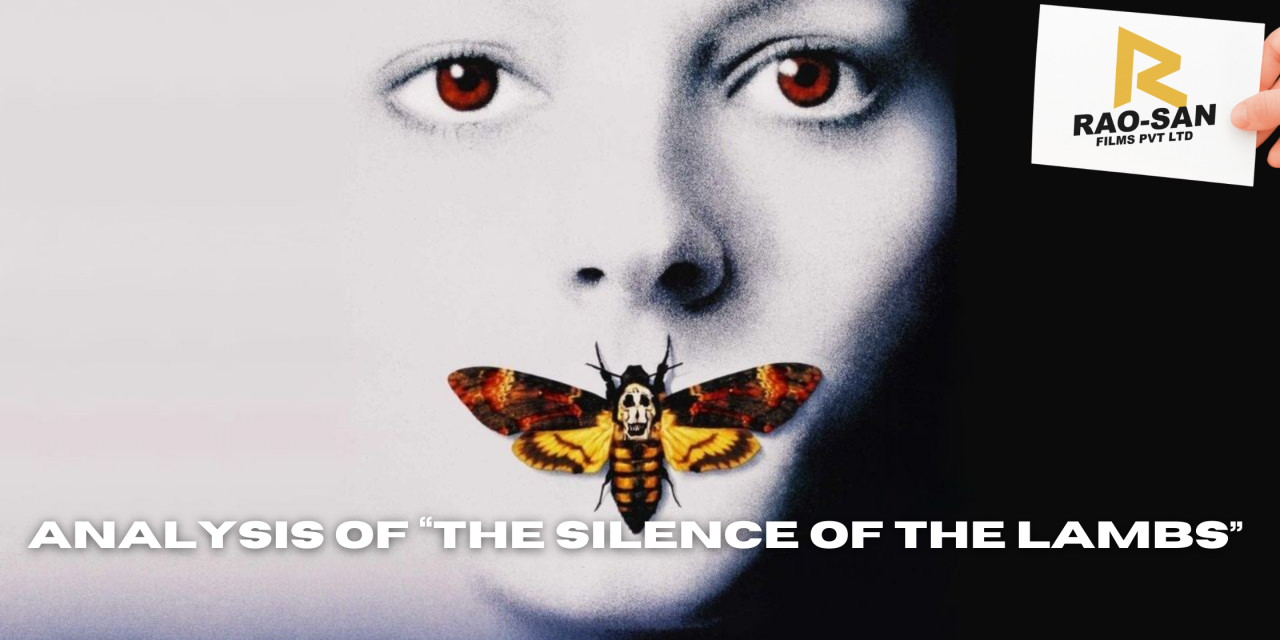In-Depth Analysis of The Silence of the Lambs
The Silence of the Lambs is a profound psychological horror film released in 1991, directed by Jonathan Demme. Celebrated as one of the most significant films in cinematic history, this film is considered a game-changer in its genre. Notably, it remains the first horror film to win all five major Academy Awards: Best Picture, Best Director, Best Actor, Best Actress, and Best Adapted Screenplay. Alongside other legendary films like It Happened One Night (1934) and One Flew Over the Cuckoo’s Nest (1975), it holds a unique place in Oscar lore.
The story is adapted from the novel of the same name by Thomas Harris, who initially introduced audiences to Dr. Hannibal Lecter in his earlier book, Red Dragon (1981). The screenplay for this iconic film was penned by Ted Tally, and it was crafted on a captivating budget of $19 million, generating an impressive $272.7 million at the box office.
This article delves into various elements of The Silence of the Lambs, including character development, narrative structure, symbolism, and musical composition, all contributing to the film’s awe-inspiring essence. Be advised that this analysis contains spoilers.
Trailer Examination
The trailer for The Silence of the Lambs effectively establishes an eerie tone suited to its horrifying subject matter. The unsettling soundtrack sets a foreboding atmosphere, as glimpses of Dr. Hannibal Lecter’s face cut through the screen. Following this, we see Clarice Starling, a rookie FBI agent, approaching a prison cell. The narrator informs us of a “killer on the loose,” further underlining the urgency of her mission. With flashes of newspaper headlines detailing the crimes of Buffalo Bill, a maniacal serial killer, the trailer creates suspense about Clarice’s investigation into his abhorrent acts.
As Clarice ventures closer to Lecter, the narrator suggests that she must engage in a battle of wits with this formidable adversary. The contrast between Clarice’s noble intentions and Lecter’s unsettling insanity amplifies the tension, leaving audiences eager to discover whether she can outsmart him or fall victim to his manipulative games.
Iconic Movie Poster
The movie poster for The Silence of the Lambs is instantly recognizable. Dominating the design is the face of a woman, symbolizing both innocence and terror. The stark contrast of her pale complexion against a dark background heightens the unsettling mood. The character, representing Clarice Starling, embodies a blend of vulnerability and courage — she is determined yet seemingly in danger.
The red accents around her eyes suggest bloodshed, hinting at the peril faced by women in this narrative. Moths featured prominently on the poster are not merely decorative; they signify transformation and are crucial to the storyline, reminiscent of the characters’ depth and complexity.
Plot Overview
Clarice Starling, a determined FBI trainee, aspires to work in the Behavioral Science Unit. Her superior, Jack Crawford, assigns her the daunting task of interviewing Dr. Hannibal Lecter, a brilliant psychiatrist turned cannibalistic killer, imprisoned for his heinous crimes. Clarice is unaware that Crawford hopes Lecter will provide critical insights into the psyche of another serial killer known as Buffalo Bill, who has already claimed five victims.
As Clarice interacts with Lecter, it becomes apparent that she must play his psychological games and delve into her own past to win his cooperation. Tension escalates when the sixth victim’s body holds a Death’s Head Moth, a key piece of evidence that combines with Lecter’s insights to reveal Buffalo Bill’s motives and imminent threats.
In a climactic showdown, Clarice finds Buffalo Bill’s lair, where she liberates Catherine Martin, Bill’s latest captive, and confronts the killer himself, culminating in his demise. As the film concludes, Clarice graduates from the FBI Academy, receiving a chilling phone call from Lecter, provoking profound reflections on their unique bond.
Character Dynamics
The film boasts an outstanding ensemble cast, with Jodie Foster and Anthony Hopkins delivering memorable performances that garnered global acclaim.
Jodie Foster as Clarice Starling, the tenacious FBI agent.
Anthony Hopkins as the enigmatic Dr. Hannibal Lecter, a man of intellect and horror.
Ted Levine as Jame Gumb, the brutal Buffalo Bill.
Scott Glenn as Jack Crawford, the field leader overseeing the investigation.
Anthony Heald as Dr. Frederick Chilton, Lecter’s provocateur and adversary.
Brooke Smith as Catherine Martin, Bill’s kidnapped victim.
Kasi Lemmons as Ardelia Mapp, Clarice’s confidant.
While Clarice is portrayed as a fierce protagonist, Buffalo Bill stands as her primary antagonist. Interestingly, Lecter oscillates between villain and ally, displaying a captivating complexity in his relationship with
Clarice. His fascination with her adds an intriguing layer to the narrative, making him a unique character who, despite being a psychopath, offers valuable insights that aid in the resolution of the case. This dynamic creates a compelling psychological interplay that captivates the audience throughout the film.
Themes and Symbolism
Feminism and Misogyny
The Silence of the Lambs profoundly addresses themes of sexism and misogyny. From the outset, Clarice encounters numerous instances of male hostility and objectification. Her interactions with Dr. Chilton highlight the gender dynamics at play, as he makes unwelcome advances and undermines her authority. The film’s portrayal of women emphasizes their vulnerability, especially in light of Buffalo Bill’s chilling crimes against women.
Clarice represents strength despite these challenges, reinforcing the message that women can rise above societal expectations and prejudice. Her determination to confront and capture Buffalo Bill embodies a rejection of the oppression she faces, establishing her as a formidable force in a male-dominated environment.
Transformation and Identity
The theme of transformation is a central motif, beautifully represented by the symbolism of moths and cocoons. Buffalo Bill’s fixation on skinning his victims to create a ‘woman suit’ reflects his deep-seated issues with identity and self-acceptance. Lecter delves into the complexities of Buffalo Bill’s psyche, illuminating how traumatic experiences shape one’s sense of self. The process of skinning women represents Bill’s futile attempt to escape his own identity, seeking to transform into something he cannot genuinely embody.
Conversely, Clarice’s journey signifies her growth and resilience. Each interaction with Lecter challenges her, forcing her to confront her fears and tapping into her emotional depth, ultimately leading to her evolution as an empowered individual who embodies bravery and compassion.
Building Suspense
Misdirection
The filmmakers skillfully employ misdirection to maintain suspense throughout the film. By interspersing scenes that create false expectations, viewers are kept on the edge of their seats. For instance, during Lecter’s escape, audiences are led to believe he is incapacitated while, in reality, he has cunningly swapped the identities with a guard, allowing him to orchestrate a daring escape.
In another instance, as the FBI closes in on Buffalo Bill’s lair, the tension escalates when it’s revealed to be the wrong location, leaving Clarice to face the real threat alone. Such clever storytelling ensures that the viewers remain engaged and invested in the unfolding drama.
Flashbacks
Flashbacks serve as poignant tools for character development, particularly for Clarice. These glimpses into her past highlight the trauma she carries, revealing her deep-seated fears and motivations. This technique provides the audience with a rich understanding of her character, influencing her actions in the present. Clarice’s emotional struggles are further emphasized during key moments, such as her recollection of childhood events that shaped her resolve to protect others, especially vulnerable individuals like Catherine.
Music and Soundtrack
The haunting score of The Silence of the Lambs, composed by Howard Shore, plays a crucial role in elevating the film’s chilling atmosphere. The music strikes a perfect balance between beauty and terror, guiding audience emotions throughout the narrative. Key tracks evoke a sense of dread while also enhancing intimate moments between characters, showcasing the duality of horror and human connection.
The inclusion of songs like “Goodbye Horses” by Q. Lazzarus adds depth to the storytelling, particularly during the chilling scene where Buffalo Bill dances in front of a camcorder. The lyrics intertwine themes of escapism and transformation, mirroring Bill’s profound struggle with his identity. This song amplifies the film’s emotional resonance, cementing its place in cinematic history.
Conclusion
The Silence of the Lambs is not simply a horror film; it’s a multifaceted exploration of the human psyche, societal issues, and morality. With its complex characters, gripping plot, and profound themes, the film has captivated audiences for decades. It challenges viewers to confront their fears and question societal norms, making it a timeless classic.
The film’s accolades and enduring impact stand as a testament to its brilliance, solidifying it as a cornerstone of cinema that continues to inspire discussions about psychology, identity, and the dark facets of humanity. In a world where evil exists, Clarice Starling’s journey serves as a beacon of hope and resilience—a reminder that courage and compassion can prevail against the darkest forces.






